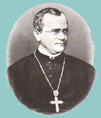Quesiton:
How do changes in temperature affect the rate of enzyme activity?
Procedure:
1) Grind the enzyme and select 5 discs of filter papers.
2) prepare 3 beaker and 3 test tubes. Beaker #1- fill w/ water and place it on a hot plate. Leave it until the temperature reaches 60 degrees of Celsius. Beaker #2-fill w/ ice cold water and add 8 ice-cubes into the beaker. Leave it until the temp. reaches 6 degrees of celsius. Beaker #3-fill w/ water and leave it in a room temperature.
3)Aquire 5ml of perioxide in each test tubes and place them into each beaker.
4)Add the peroxide solution and the catalase into a flask. Use the 100ml of graduated cylinder to meaure the amound of gas produced through water. Attach the tubes from the flask into the graudated cylinder and well shake the flask for 30 sec.
5) Record the result and repeat # 4 two more times.
Observations/Results:
Room temperature trial | Cold temperature trial | Hot temperature trial | |
Temperature (celcius) | 22 | 6 | 60 |
O2 produced (mL) | 570 | 100 | 200 |
Sources of Errors:
- inconsistent amounts of perioxide
-inconsistent amounts of paper dics/ enzymes used
-timing (over 30s)
-inconsistent degrees of temperature
-inaccurate meaurement of oxygen
-additional water may used after rinsing





